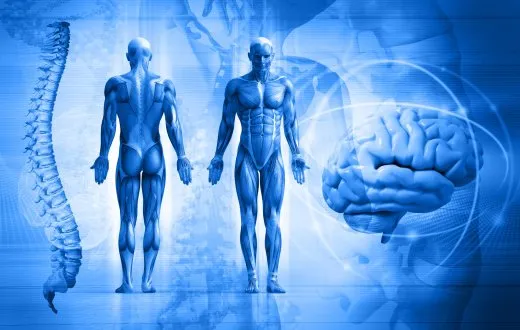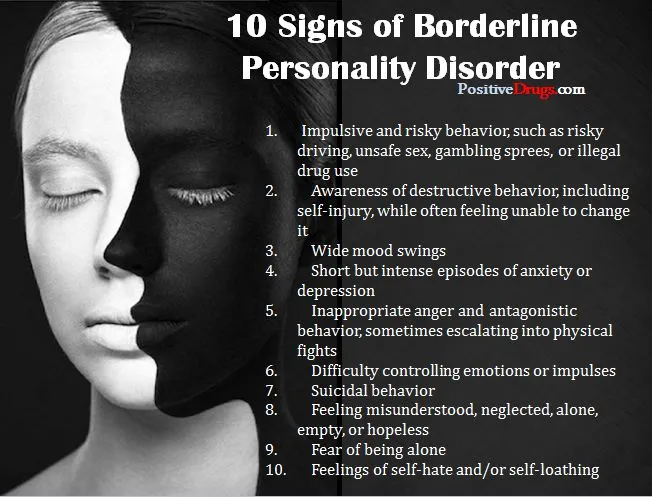Misconception of Personality And Medical Model

Image Source
Personality is the patterning of characteristics over the entire matrix of the person. Instead of being limited to a single trait, personality respects the total configuration of the person's characteristics, cognitive, interpersonal, biological, and psychodynamic. Every trait reinforces the others in perpetuating the stability and behavioral consistency of the total personality structure. Personality disorders causality is literally all over.
Every domain interacts to influence the others, and together, they maintain the integrity of the whole structure. Conversely, the causes of the Axis I clinical syndromes are thought to be localizable. The reason for an adjustment disorder lies in a current change in life circumstances that requires considerable getting used to. Here, causes and consequences are distinguishable, with discrete distinction between the underlying disease and its symptom expression. Difficulty making an adjustment might bring about feelings of depression.
For the personality disorders, be that as it may, the distinction amongst disease and symptom is lost. Instead, causality issues from each domain of functioning. Every component in the whole structure sustains the others. This explains why personality disorders are notoriously resistant to psychotherapy.
Personality disorders are not diseases, along these lines, we should be extremely cautious in our easygoing use of the term. To imagine that a disorder could be anything other than a medical illness is exceptionally difficult. The idea that personality constitutes the immunological matrix that determines our overall psychological fitness is intended to bring an end to the since a long time ago dug in habit of conceiving syndromes of psychopathology as one or another variant of a disease, that is, as some foreign entity that intrudes insidiously within the person to undermine its purported normal functions.
The archaic notion that every single mental disorder speak to outside intrusions or internal disease processes is a branch of prescientific ideas, for example, demons or spirits that have the person. The part of infectious agents and anatomical lesions in physical medicine has stirred this view. Demons are practically ancient history, however personality disorders are still observed as involving some outside entity that invades and agitates an otherwise healthy status. Despite the fact that we are compelled to utilize such terminology by linguistic habit, it is impossible for anyone to have a personality disorder. Or maybe, it is the total matrix of the person that constitutes the potential for psychological adaptation.

Image Source
Normality and Pathology
Normality and abnormality can't be differentiated objectively. Every such distinction, including the diagnostic categories of the DSM-IV, are in part of social constructions and cultural artifacts. In spite of the fact that persons might be isolated into groups according to explicit criteria, ostensibly lending such classifications the respectability of science, the desire to isolate and the demonstration of segregating persons into diagnostic groups are uniquely social. All definitions of pathology, malady, ailment, illness, sickness, are ultimately esteem loaded and circular.
Given its social basis, normality is presumably best defined as conformity to the behaviors and customs typical for an individual's reference group or culture. Pathology would then be defined by behaviors that are extraordinary to the individual's reference group. Not surprisingly, writers have regularly thought of normality as the ability to function independently and capability to obtain a personal sense of happiness and satisfaction.
Different cultures may have different standards, in Asian societies, for instance, individualism is not esteemed as highly as regard for group norms. Normality and pathology reside on a continuum. One gradually blurs into the other. Since personality disorders are made out of maladaptive traits, there are two ways that personality pathology turns out to be more serious while moving along the continuum from wellbeing to pathology. First, single traits can turn out to be more intense in their expression, assertiveness can give way to aggression or deference can give way to masochism. Second, the number of maladaptive traits attributed to the given subject may increase.
Personality disorders may best characterized by three pathological characteristics. The first takes after directly from the conception that personality is the psychological simple of the body's immune system. Personality disorders tend to exhibit a shaky stability, or absence of resilience, under conditions of stress. The coping strategies of most individuals are diverse and flexible. When one procedure or behavior isn't working, normal persons shift to something else.

Image Source
Personality disorder subjects tend to practice similar strategies over and again with just minor variations. Subsequently, they always appear to exacerbate the situation. Thus, the level of stress continues increasing, amplifying their vulnerability, creating crisis situations, and producing increasingly distorted perceptions of social reality.
A second characteristic covers to some degree with the first, Personality-disordered subjects are adaptively inflexible. Normal personality functioning entails part flexibility, knowing when to step up and change the environment, and knowing when to adjust to what the environment offers. Normal persons exhibit flexibility in their interactions, with the end goal that their initiatives or reactions are proportional and appropriate to circumstances.
At the point when constraints on behavior originate from the situation, the behavior of normal individuals has a tendency to join, paying little heed to personality. If the supervisor needs something done a particular way, the vast majority will take after directions. Such situations are highly scripted. Practically everyone comprehends what to do and carries on in almost a similar way.
By differentiate, the alternative strategies and behaviors of personality-disordered subjects are very few and rigidly imposed on conditions for which they are poorly suited. Personality-disordered subjects implicitly drive or control interpersonal situations through the intensity and rigidity of their traits. Basically, the personality-disordered person provides the most powerful constraints on the course of the interaction. Since they can't be flexible, the environment must turn out to be much more so. At the point when the environment can't be orchestrated to suit the person, a crisis follows. Opportunities for learning new and more adaptive strategies are accordingly considerably additionally decreased, and life turns into substantially less pleasant.
The third characteristic of personality-disordered subjects is an outcome of the second. Since the subjects fail to change, the pathological themes that dominate their lives tend to rehash as vicious circles. Pathological personalities are themselves pathogenic. Basically, life turns into an awful one-act play that rehashes and again. They squander opportunities for improvement, incite new issues, and always make situations that replay their failures, regularly with just minor variations on a couple of related, reckless themes.

Image Source
